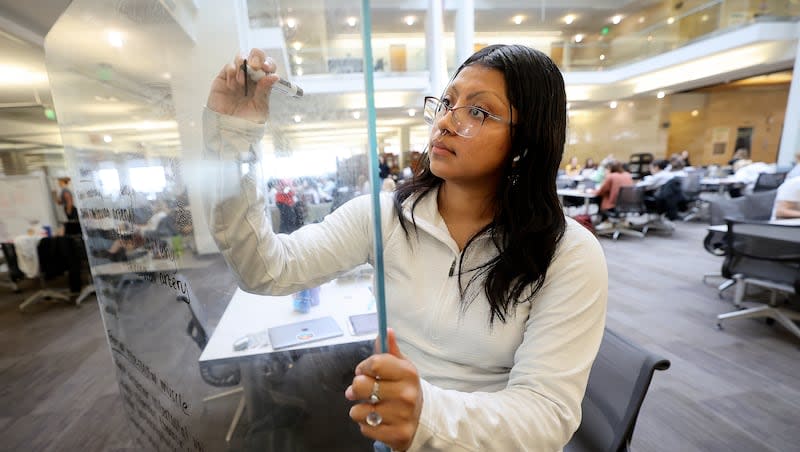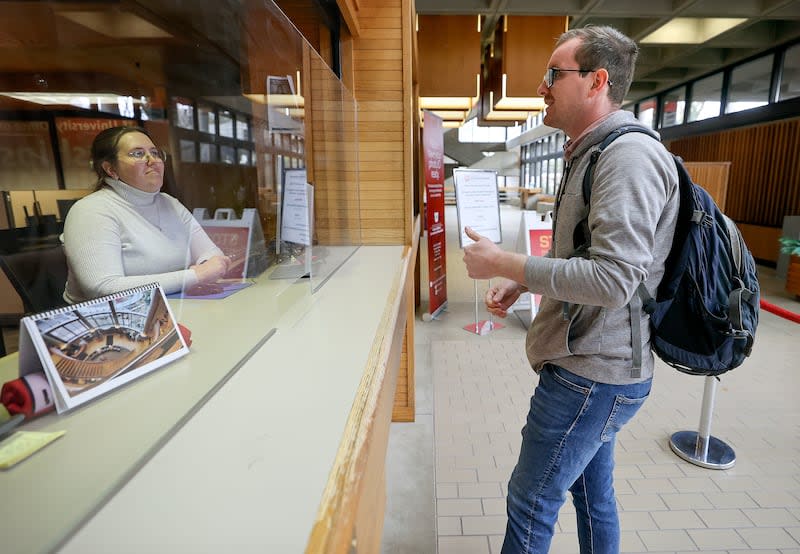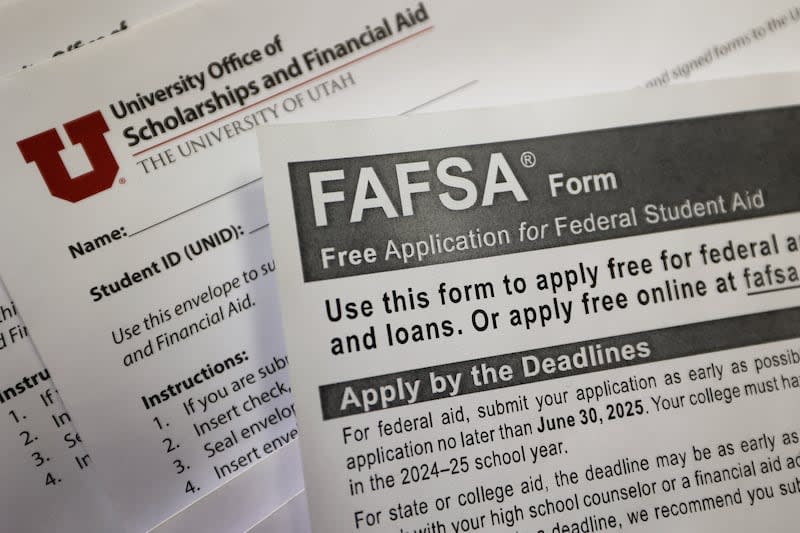FAFSA debacle leaves college students in financial limbo

As of Wednesday, the University of Utah’s financial aid office had received just one student’s ISIR, short for Institutional Student Information Record, from the Department of Education. ISIR is a personalized record that helps a college or university determine an applicant’s eligibility for federal student aid programs.
Utah’s flagship university, like thousands of others across the country, is anxiously waiting for ISIR data, which will enable it to assemble financial aid packages for thousands of prospective students, which will enable the applicants to decide where they will attend college.
The delay is tied to the Education Department’s update of the Free Application for Federal Student Aid, or FAFSA. The Education Department worked to streamline the applications but the rollout, expected in October, didn’t occur until December. Once the forms were released online, there were complications that resulted in the forms being taken down multiple times, which delayed families’ access to online forms and posed challenges for families that were unable to fix mistakes in forms they had submitted.
It has resulted in far fewer FAFSA submissions, according to the National College Attainment Network’s FAFSA tracker. In Utah, 11,827 Utah high school seniors had submitted federal financial aid applications as of March 1, down 25.8% from the previous academic year, according to NCAN data.
Steve Robinson, senior associate vice president for enrollment management at the University of Utah, said the impact of the delays has been “pretty significant.”
“Literally, I have one ISIR. This is because the Department of Education is still processing all the FAFSA submissions that are coming in. They’ve had so many significant delays and slowdowns that it’s taking them a while. Our hope is that, and what the department saying, we will start getting larger batches of these ISIRs over the next several weeks and our hope is that we can catch up to where we were last year at this time,” he said.
In recent years, the university informed students receiving needs-based awards in February. “Now we’re probably looking at April,” Robinson said.
The university is urging students to “wait and be patient,” Robinson said.
“This is a transition year and they did make FAFSA much easier to use. I mean, it’s much shorter,” he said.
Every college and university in the country is dealing with the delays, he said. “There’s no one that’s exempt from it,” Robinson said.
The university’s financial aid office has been preparing for the Education Department to send ISIR data by testing its technology so the data can be processed as efficiently as possible, enabling the office to notify students about their offers immediately by email, which will be followed by a letter mailed to their homes, Robinson said.
The university is anticipating that 28,000 first year students will apply for admission this year but not all apply for financial aid or opt to attend the university. This academic year, 5,560 first-year students started classes in fall 2023.
Robinson said another complication is any student who applies whose parent does not have a Social Security number must apply on paper forms and those forms will not be processed until the Department of Education starts sending the electronic ISIR data to colleges and universities, which will mean further delays for those students.
“The biggest thing I’m concerned about right now is that we may have some students just walk away from higher ed completely, that they have just decided that it’s too much, especially right now,” he said.

Depending on the term, 54% to 65% of U. students receive federal financial aid, Robinson said.
Isaac Denison, a junior in the U.’s College of Engineering, said he attempted to complete FAFSA forms in January “only to be told the application would be delayed another month. I went back to apply in mid-February. I have applied to FAFSA before, but it has, at most, taken me two hours spread out over a couple of days. This year, I checked four or five times over three months before finally being allowed to apply. I submitted the section applicable to myself, but I still have no idea if I’ve completed the application, and no idea how or where to check,” he said.
Denison said he does not anticipate he will receive financial aid from any federal program. “I’ve expected aid in the past, but I have given up placing hope in this program. My current student aid comes from the University of Utah and several private and corporate donors,” he said.
Meanwhile, at Salt Lake Community College, the college does not plan to push back admission deadlines as a result of the FAFSA delays, according to Ryan Farley, associate vice president of student enrollment.
“Regarding financial aid, we’ll be adjusting scholarship and other aid deadlines as necessary. But similar to admissions, we already award aid well into the semester, even removing any late fee if the financial aid is in process.
“The main point is simply we’ll hold the student harmless for any ill effects the delay in receiving ISIR data causes,” Farley said.


